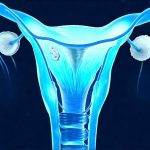Urinary tract infections (UTIs) are frustratingly common, particularly for women, and the experience can be even more disheartening when symptoms seem to flare up repeatedly, especially in the afternoon. Many individuals find themselves battling a cycle of initial relief after treatment, only to have discomfort return as the day progresses. This isn’t necessarily indicative of antibiotic resistance or a failing treatment plan; often, it stems from everyday habits and environmental factors that exacerbate UTI susceptibility. Understanding these triggers and proactively modifying behaviors can significantly reduce afternoon flare-ups and improve overall urinary health.
The sensation of a recurring UTI in the afternoon frequently isn’t a new infection taking hold so quickly—it’s more likely lingering irritation or inflammation within the urinary tract. While antibiotics address bacterial infections, they don’t necessarily resolve all the underlying sensitivities that contribute to discomfort. This can be due to factors like dehydration, dietary choices, pressure on the bladder from prolonged sitting, or even specific soaps and detergents used throughout the day. Recognizing this distinction is crucial for developing a holistic approach to prevention beyond just antibiotic treatment. It’s about building resilience in your urinary system and minimizing potential irritants.
Understanding Afternoon UTI Flare-Ups
The timing of afternoon flare-ups isn’t coincidental; it often correlates with changes in daily routines. Throughout the morning, many people are more focused on hydration – perhaps drinking coffee or tea alongside water while getting ready for work or school. As the day progresses, however, busy schedules can lead to decreased fluid intake and increased stress levels. Stress contributes significantly because it impacts the immune system, potentially making individuals more vulnerable to irritation. Additionally, prolonged sitting is a common culprit; it compresses the bladder area and can impede complete emptying during urination, creating an environment where bacteria can flourish.
This combination of factors – dehydration, stress, and physical pressure – creates a perfect storm for afternoon discomfort. Furthermore, consider that the urinary tract’s natural defense mechanisms might be slightly weaker later in the day due to cumulative exposure to potential irritants. For example, soaps used during showering or laundry detergents can leave residue that sensitizes the urethra. Even seemingly harmless activities like wearing tight clothing can constrict urine flow and increase susceptibility. Identifying your personal triggers is paramount – what specifically sets off your afternoon flare-ups?
The feeling of a flare-up might manifest as urgency, frequency, burning sensation during urination, or even just a general discomfort in the pelvic area. It’s important to differentiate between a true reinfection (requiring medical attention) and an irritation that mimics UTI symptoms. If you’re unsure, it is always best to consult with your healthcare provider. Don’t self-diagnose or self-treat, as this can lead to complications and antibiotic resistance. The goal isn’t just to suppress symptoms but to address the underlying causes of these afternoon discomforts.
Proactive Prevention Strategies
Preventing afternoon flare-ups begins with establishing consistent habits that support urinary health throughout the entire day. Hydration is undeniably the cornerstone of UTI prevention, and this means consistent hydration, not just a large glass of water in the morning. Aim for a steady intake of water throughout the day – at least eight 8-ounce glasses or more depending on your activity level and climate. Consider carrying a reusable water bottle as a visual reminder to sip regularly. Beyond water, herbal teas known for their diuretic properties (like dandelion or parsley tea) can also be beneficial, but always check with your doctor before incorporating new herbs into your routine.
Diet plays a role too. While there’s no definitive “UTI diet,” reducing intake of bladder irritants like caffeine, alcohol, spicy foods, and artificial sweeteners can minimize sensitivity. A balanced diet rich in vitamins and antioxidants supports immune function, helping the body defend against infection. Foods containing D-mannose – such as cranberries (although their effectiveness is debated) and peaches – may help prevent bacteria from adhering to the urinary tract walls. Focus on a holistic approach: combining adequate hydration with dietary adjustments strengthens your overall system.
Optimizing Bathroom Habits
Proper bathroom habits are surprisingly influential in preventing UTI flare-ups. – Always empty your bladder completely when you urinate, avoiding rushing or incomplete emptying. This helps flush out bacteria and reduces residual urine that can contribute to infections. – Practice double voiding – after finishing urination, wait a few seconds then try to urinate again. This ensures maximum bladder emptying. – Urinate shortly after sexual activity, as this is a common time for bacteria to be introduced into the urethra.
Furthermore, avoid habitually “holding it” for extended periods. Frequent holding can weaken bladder muscles and increase the risk of incomplete emptying. Consider scheduling regular bathroom breaks throughout the day, even if you don’t feel an immediate urge, especially if your job requires prolonged sitting. These small adjustments to your routine can make a significant difference in maintaining urinary health and reducing afternoon discomfort.
Managing Stress & Physical Pressure
Stress is a silent contributor to many health issues, including UTI flare-ups. Chronic stress weakens the immune system, making you more susceptible to infections. Incorporate stress-reducing techniques into your daily routine – this could include meditation, yoga, deep breathing exercises, or simply spending time in nature. Even short periods of mindful relaxation can have a positive impact on your overall health.
Physical pressure on the bladder is another key factor. If you work at a desk for long hours, take frequent breaks to stand up and move around. Consider using a standing desk or adjusting your chair to promote good posture. Avoid wearing tight-fitting clothing that constricts urine flow. Prioritize comfortable movement and regular breaks. These actions alleviate pressure on the bladder and encourage healthy urinary function.
Clothing & Personal Hygiene Considerations
The materials we wear and the products we use for personal hygiene can significantly impact urinary health. – Opt for breathable cotton underwear rather than synthetic fabrics, as cotton allows for better airflow and reduces moisture buildup which is conducive to bacterial growth. – Avoid tight-fitting pants or leggings that restrict urine flow. – Be mindful of the soaps, detergents, and feminine hygiene products you use. Choose fragrance-free, hypoallergenic options whenever possible, as harsh chemicals can irritate the urethra.
When cleaning, wipe from front to back after using the toilet to prevent bacteria from spreading from the rectal area to the urinary tract. Avoid douching or using scented wipes, as these disrupt the natural balance of vaginal flora and can increase susceptibility to infections. Simple changes in clothing and hygiene practices can create a more favorable environment for urinary health and minimize afternoon flare-ups.





















